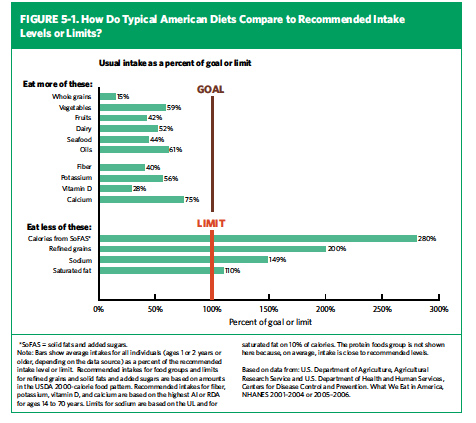Contemplating Diet and Nutrition: A First Look at the USDA’s New Guidelines
On Sunday afternoons I tend to think about food for my family. Sometimes that’s because we’re having a few more than usual at the dinner table. Also, it’s a time when I order the bulk of fish, meat, produce and other ingredients for the week ahead.
Since I had cancer, I’ve paid much more attention to the food I serve in our home than before. While a balanced diet is no fail-safe for avoiding disease, I do think it’s prudent to be aware of the variety and quantity of food we eat. In medical school we learned surprisingly little about nutrition. Most of what I know I’ve learned from reading books – like Michael Pollen’s In Defense of Food – and reading through detailed reports like the USDA’s new Dietary Guidelines for Americans (7th Edition) issued a few days ago.
From the press USDA and HHS joint press release:
Because more than one-third of children and more than two-thirds of adults in the United States are overweight or obese, the 7th edition of Dietary Guidelines for Americans places stronger emphasis on reducing calorie consumption and increasing physical activity.
The Times summed up the new guidelines nicely in its headline: Government’s Dietary Advice: Eat Less.
But it’s not a trivial report. Rather, it’s a hefty-if-printed (I didn’t) 112-page pdf with some fluff (even blank pages for notes) and some excellent, hard-to-find-elsewhere details on nutrients. Some highlights include Figure 5-1, which demonstrates with abundant clarity that we don’t eat sufficient fruits, vegetables, whole grains or most other recommended foods:
I’m still digesting (sorry, I can’t help myself) detailed chapters and tables in the full report. There’s a lot of useful information to take in. For example, Appendix 11, on p. 85, charts the “Estimated EPA and DHA and Mercury Content in 4 Ounces of Selected Seafood Varieties” – handy if you serve fish for dinner at least twice per week, and like me, figure it’s best to hedge on potential toxic effects by serving a variety of fish.
More from the press release, on tips that will be provided to help consumers translate the Dietary Guidelines into their everyday lives:
• Enjoy your food, but eat less.
• Avoid oversized portions.
• Make half your plate fruits and vegetables.
• Switch to fat-free or low-fat (1%) milk.
• Compare sodium in foods like soup, bread, and frozen meals – and choose the foods with lower numbers.
• Drink water instead of sugary drinks.
All of these seem wise, but obvious. Still, it’s clear that most of us aren’t following the guidelines, or even common sense.
Setting guidelines should help, so teachers in schools and cafeteria-caterers can know what to tell and feed kids, so they develop good eating habits. But really I think that most of the information, if you can call it that – what constitute our dietary habits begun in childhood – has to be cultivated in our homes, the popular culture and community at large. So my plan is to delve further into the USDA report, and elsewhere, and once each week (maybe) post a nutritional ML. I hope it won’t be too simple or boring.
Like a diet, we’ll see how this goes –

Often a major diagnosis shifts our behavior or attention but I am curious about suggestions you have to get people to raise the importance of change prior to a diagnosis or health scare.
One thing that the federal government can do is condense the widely dispersed information on nutrition into one organization, similar to the United Kingdom’s Food Commission, so that cohesive food policy can be efficiently created and implemented. One benefit of having cohesive food policy is that the United Kingdom has accepted standards to judge food “healthfulness.” As a result Tesco, a large grocery chain, placed “stop sign” decals on less-healthy food and sales for those items dropped by 41 percent.
We lay out specifics on how to empower consumers to take personal responsibility for improving their health through education, interactive tools, and incentives at http://www.hopestreetgroup.org/docs/DOC-2480
Joy,
Thanks for your thoughts on this, and for your work at HSG (about which I want to learn more).
I’m not sure (doubt) that consolidating nutritional info is the best solution. As for shifting behavior before a cancer or other diagnosis – really I think we need a cultural shift in our food habits, which starts at home and, as a backup, in elementary schools.